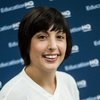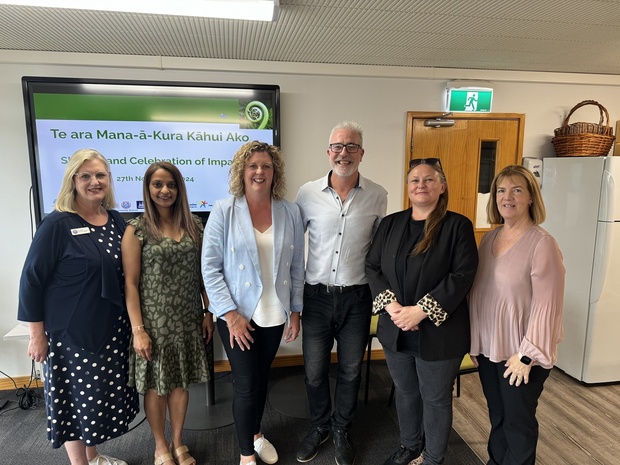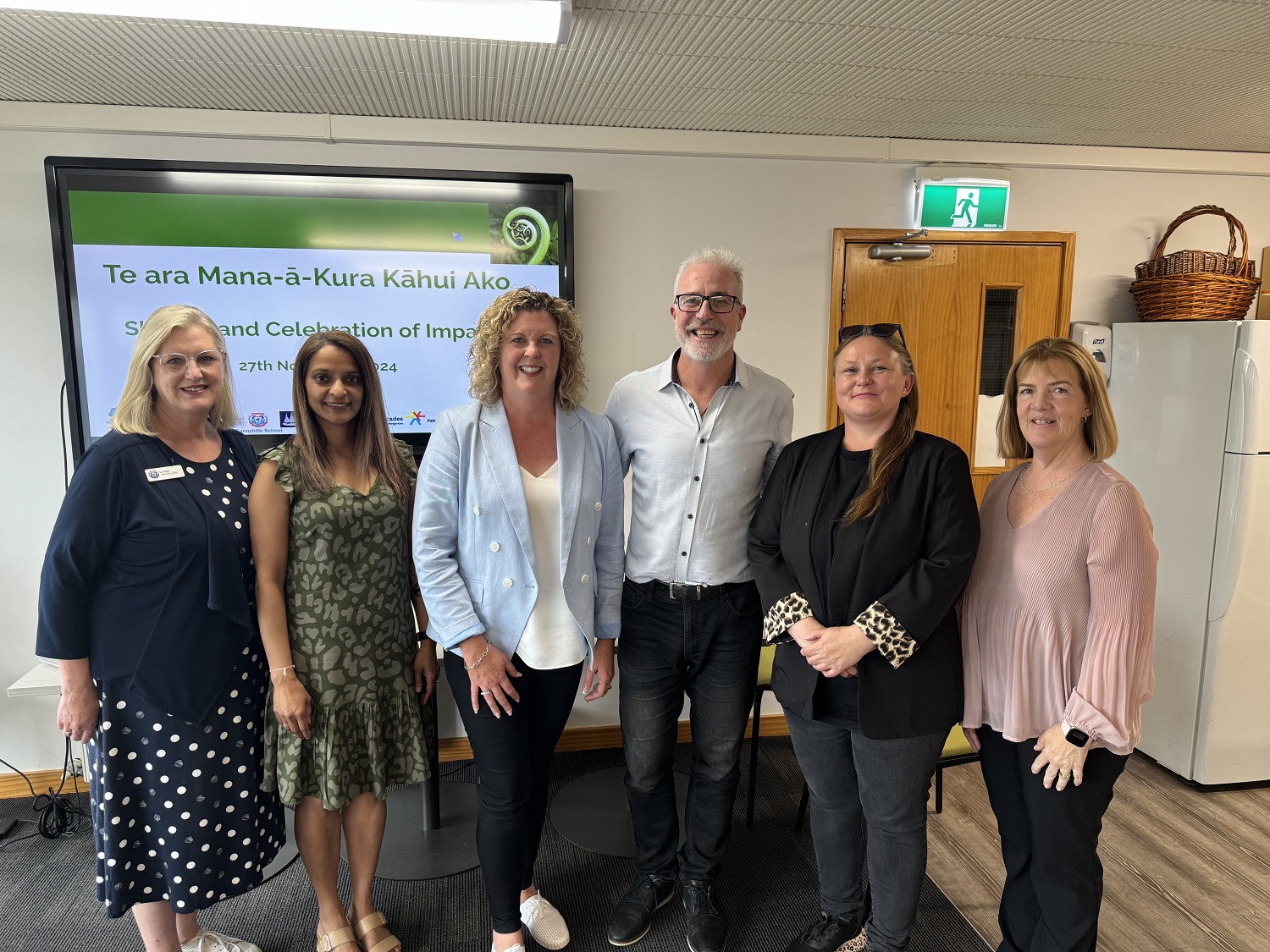Their approach is collective, focussed on student pathways and invests heavily in teachers.
And while achievement data is still being gathered, anecdotal evidence so far suggests they may have found the perfect solution.
Serving five schools and six early learning services in eastern Tamaki Mākaurau Auckland, the kāhui ako is also known as Te ara Mana-ā Kura, which translates to, ’the pathway of empowering our schools’.
Caroline von Sierakowski is the kāhui ako’s lead principal, as well as being principal at Wakaaranga School.
She says, the essence of the kāhui ako around is student pathways, which is something the whole group buys into, and is the key purpose of the collective of schools.
“And, the pathway and its effectiveness is really absolutely dependent on the capability of our teachers,” the principal explains.
“So we can have everything else in place, but if we don’t have great teachers delivering those learning programs in our schools, then we’re hamstrung really.
“So [teachers] are where we decided our big investment was, they are our key change makers as such.”
Schools within the kāhui ako enjoy quite a stable workforce, von Sierakowski says, so training teachers is seen as a good, long-term investment.
“And we have staff who are really willing to upskill and want the best for the students,” von Sierakowski says.
“So we have the perfect conditions for upskilling them.”
This has been achieved by developing very strong, trusting, professional relationships, with plenty of opportunities for collaboration.
Twice per term, leading maths teachers from each school gather in focus groups, to examine the problems of practice within maths across the kāhui ako.
These focus groups are also informed through one-on-one meetings that across-school leads have with individual schools, so teachers are aware of what’s happening in each school and how that impacts on the broader pathway.
“Then within those focus groups, teachers work together around what the problem of practice is and what needs to be done to overcome it,” von Sierakowski explains.
“So one thing that we have had is around the co-requisite for our senior students and how their readiness is looking within the pathway.
“Then we have back-mapped that, through intermediate and into primary and we’re in the process of working through that, to look at what we need to adjust for our teachers within the scope of what we’re teaching.”
Strong practitioners have been identified, within the kāhui ako, and opportunities to observe them in action have been offered.
Quite a bit of that has happened with intermediate school [teachers] going in to observe the college teachers,” von Sierakowski says.
“So we can upskill them as far as understanding what the students are going to, looking at best practice in the college, and then how that can flow back into the intermediate.”
The model of great teaching the schools have developed is underpinned by the science of learning, explicit teaching and student agency.
“I think if we reflect back on education, we’ve probably left too much to chance or made too many assumptions as to what students have known, or the knowledge they would acquire,” von Sierakowski says.
The principal says the kāhui ako’s approach now is based on the notion that students have to actually be taught the fundamentals of knowledge and skills before applying that knowledge in real life.
Some school, she says, have gone as far as implementing whole class explicit teaching.
“In the traditional classroom environment, you had your triangle group, your square group and your hexagon group, and you were sort of put into this triangle group and stuck there forever,” von Sierakowski says.
“Whereas through this explicit whole class teaching, everybody’s exposed to the concepts at their particular expected level.
“Then there’s fluid support groups that follow on from that, where students can be supported by the teacher to reinforce those points. If they need additional unpacking of concepts, they have that support.”
Growing Great Teachers has been in place for roughly two years now, and while student achievement data is still pending, von Sierakowski says there has been a marked increase in teacher confidence and competence.
“One of the things that we have been conscious of as a kāhui ako over the last year is, ‘how do we know we’ve had an impact?’,” she explains.
“So they have been collecting anecdotal information from the teachers who have been involved in those focus groups, around the level of growth of confidence and competence in mathematics and we’ve definitely seen a shift in that.
“We’re expecting to see a shift in mathematics over time, as to whether that comes through this year will be interesting to see because the journey has been this year, of course, and it’s not always an immediate shift.”
Leading a shift in pedagogy can be a significant undertaking across one school, let alone across five.
One of the biggest challenges within a kāhui ako, von Sierakowski says, is getting buy in from every school.
“I think that is why ours has worked, because it’s all been focused on curriculum, which, we all have to buy into the maths curriculum, and on that student pathway that we’re all part of, there’s no negotiation in that,” she says.
“All of our schools have a very clear understanding of the fact that our students go through that pathway and it’s that collective responsibility, so I think keeping that at the core has helped us.”
It has also been important, the principal says, to respect the little differences between schools’ approaches to mathematics, and support individual schools on their journey, rather than pushing everybody to follow the same path.
“There are aspects that some schools just do a little bit differently, and they’ve had bespoke goals that they’ve been working on with our cross-school leaders,” she explains.
All in all, von Sierakowski says it’s been a journey well worth taking as a group of schools.
“I think it’s the level of expertise that we have across the schools, that collective experience, collective wisdom, that’s made it so powerful and the experience and expertise are all different points of the pathway,” she says.














